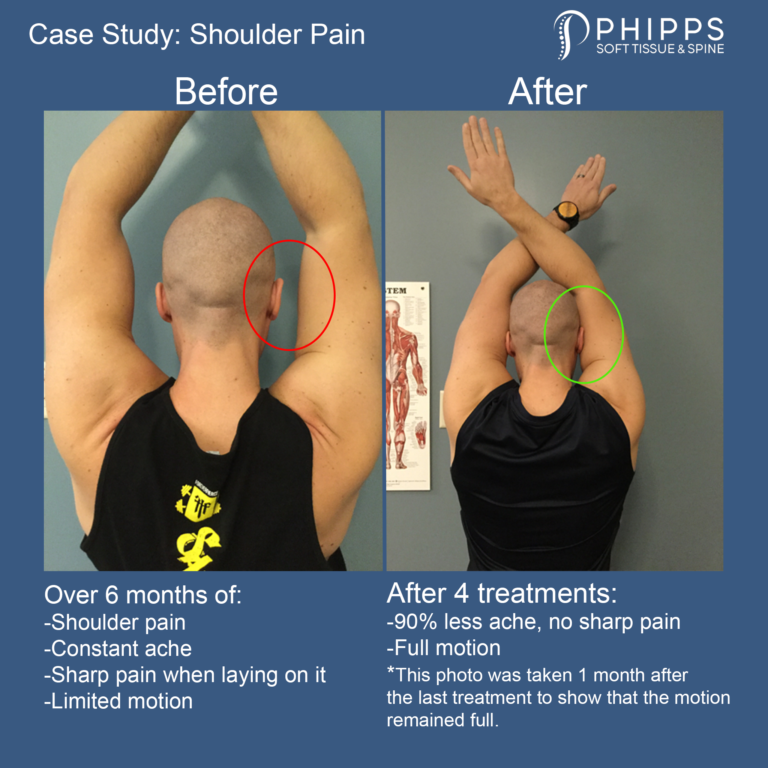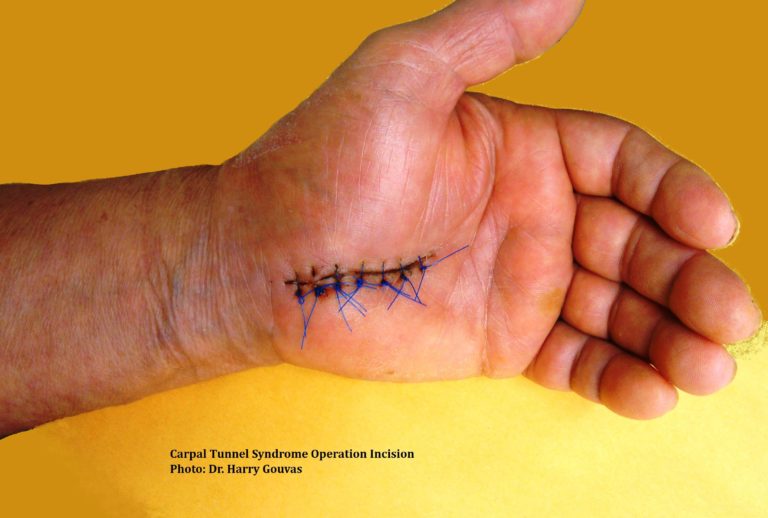Avoid Lower Back Pain with Sit-Slide-Lean
Is it better to sit up straight or lean back? If you are experiencing lower back pain after sitting, it may have to do with your posture. Sit-Slide-Lean is the mantra that you should repeat every time to avoid back pain after sitting.
Sit down, slide your butt all the way back, then lean back and relax.
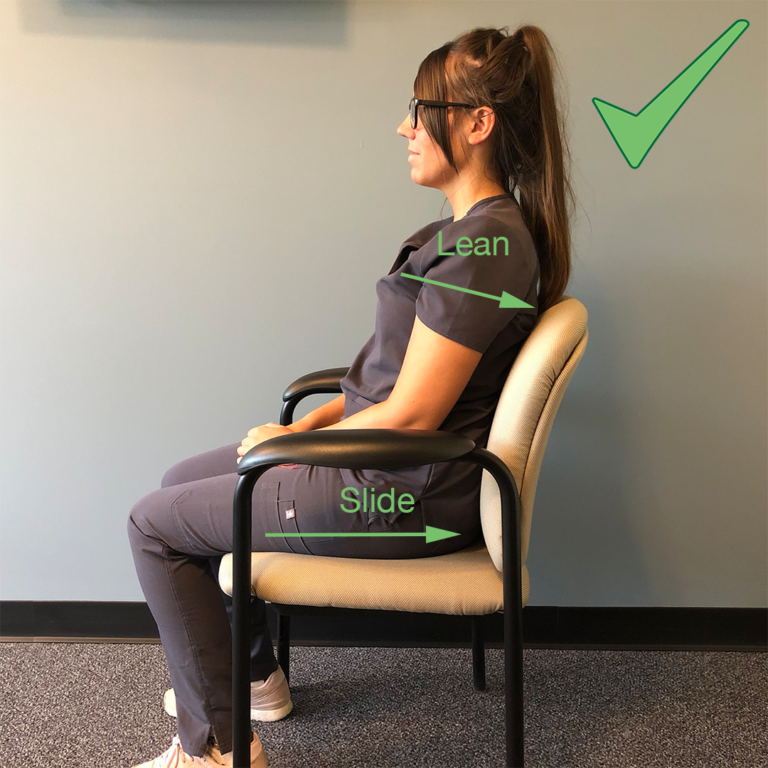
This will put you in optimal position without activating your postural muscles, allowing you to sit in a safe position without falling into a flexed our slouched posture. Sitting in this position will decrease compression in your low back and decrease lower back pain from sitting.
Two of the most common mistakes that occur with sitting are:
1. Not sliding all the way back.
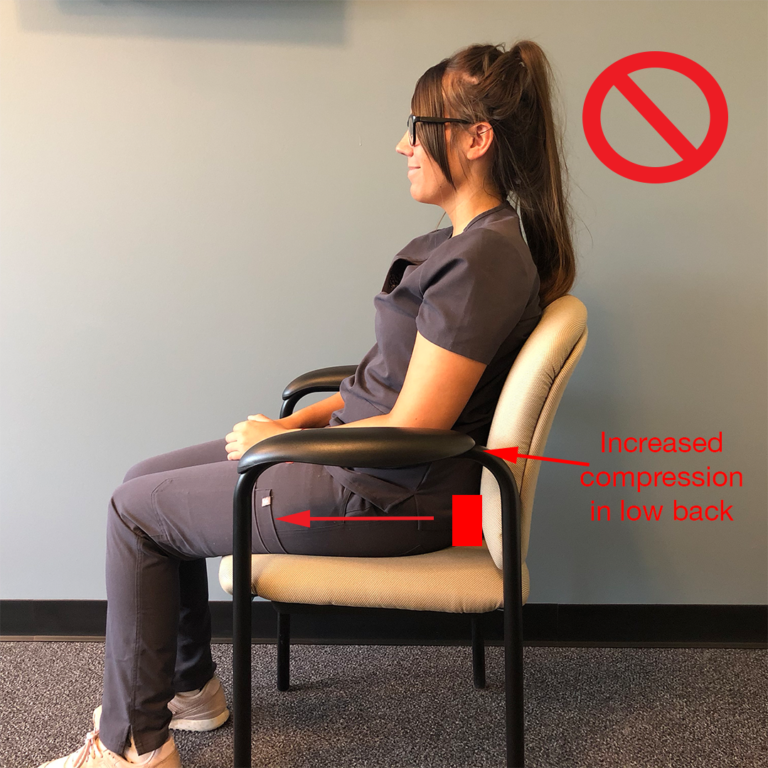
Failure to slide all the way back will result in flexion in the lower segments of your low back especially at L4-L5 and L5-S1 (Two of the most common discs to degenerate and cause pain). Sitting in a flexed position will accelerate degeneration and increase pain.
2. Not leaning back and relaxing.
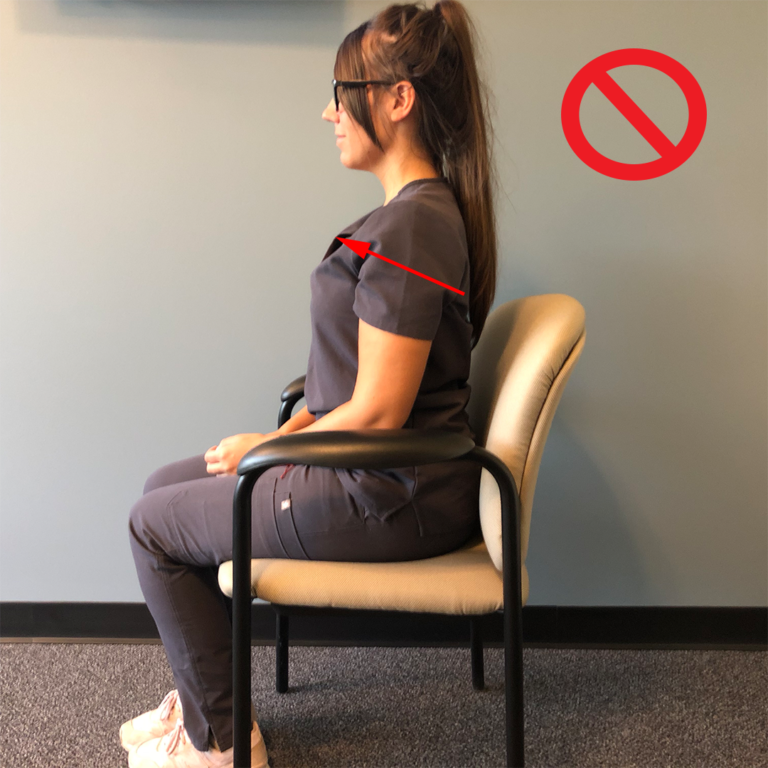
You may experience lower back pin when leaning forward while sitting. Failure to lean back and relax will cause your postural muscles to contract to maintain your position. Excessive contraction will quickly lead to fatigue and more compression through your spine causing pain.
Make sure you always sit-slide-lean to avoid back pain, but it is also important to get out of your chair every 20 minutes (even if its only for a few seconds) and go for short walks around the office every hour.
*Please note that every patient is different. The content and tips displayed on this page are for educational purposes only, and do not substitute for medical advice. Please consult with a medical or healthcare provider, such as Dr. Phipps, for specific diagnosis and treatment advice.
Williamsville, NY 14221 Chiropractor

